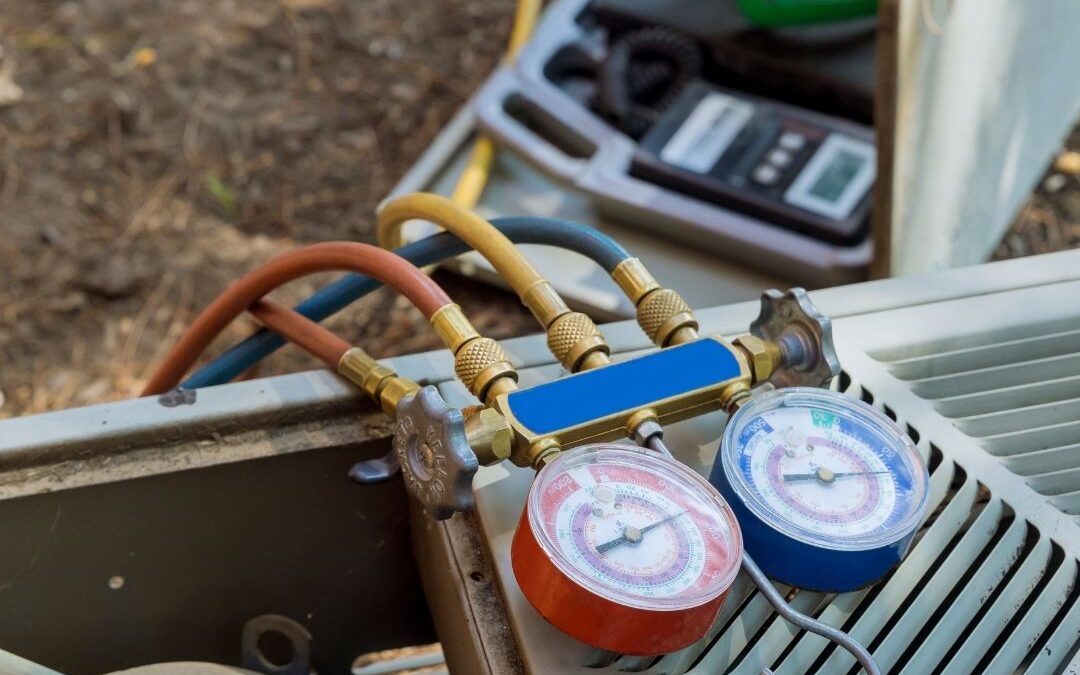The HVAC industry is on the brink of another significant change affecting homeowners, businesses, and manufacturers that use refrigerant in their products. The Environmental Protection Agency (EPA) has mandated new, more eco-friendly refrigerants, class A2L Refrigerants, effective January 1, 2025.
Understanding the Shift from R-410A
For the last several years, R-410A has been the refrigerant of choice for residential HVAC systems, including air conditioners and heat pumps. However, the industry is moving away from R-410A to more eco-friendly alternatives due to its high global warming potential. This phasedown is part of a worldwide effort to reduce HVAC systems’ environmental impact and combat climate change.
What the New Regulations Mean
In 2024, the production of R-410A will gradually be phased down, and in 2025, the production of systems with R-410A will be completely phased out. This doesn’t mean your current air conditioner or heat pump will become obsolete overnight. However, it does signal a shift towards new systems that utilize refrigerants with a lower environmental footprint. HVAC industry experts anticipate $2,000 to $3,000 more for the new equipment that meets the latest EPA mandate.
For homeowners with existing HVAC units that use R-410A, the most immediate impact will be on maintenance and repair costs. As R-410A becomes less available, the cost to recharge or service air conditioners and heat pumps will increase. This makes understanding your system’s refrigerant type more crucial than ever.
The Role of HVAC Refrigerant in Climate Control
HVAC refrigerant is the lifeblood of any air conditioner or heat pump, facilitating heat transfer to provide cooling. As we transition away from R-410A, understanding the environmental impact of refrigerant choices becomes crucial. The new HVAC systems will use A2L refrigerants that have a reduced effect on the ozone layer, marking a significant step forward in eco-friendly climate control.
Upgrading to a New Refrigerant
Upgrading to a new system with a more environmentally friendly refrigerant that aligns with the latest regulations can save money in the long run. Newer HVAC models will decrease your carbon footprint. Additionally, transitioning to a system that uses a refrigerant that is not subject to phasedown ensures easier maintenance and availability of parts. However, these systems have more components and price increases are associated with them, especially for those that use R-32 and R-454B. These new refrigerants are non-toxic and mildly flammable.
Preparing for the Change
1. Identify Your System’s Refrigerant Type: Check if your existing HVAC system or air conditioner uses R-22 or R-410A refrigerant. This information is typically located on the unit’s specification label. If you need assistance with this, our professional team can help.
2. Consider the Age of Your System: If your air conditioner or heat pump is ten years old or nearing the end of its lifespan, upgrading to a new system might be more cost-effective than putting money into an outdated system with a different refrigerant type.
3. Explore Your Options: Research the new refrigerants used in residential air conditioners and HVAC systems. The new refrigerants will lower environmental impacts.
4. Consult with Professionals: Speak with HVAC experts, like those at Smoak’s Comfort Control, to understand the best options for your home. Whether repairing or maintaining your existing HVAC units or investing in a new system, we offer professional advice to guide you through the transition smoothly.
The Introduction of R-454B and R-32: Game Changers
R-454B and R-32 are poised to replace R-410A as the preferred HVAC refrigerant for new air conditioners and heat pumps. These refrigerants boast a lower global warming potential and are less harmful to the ozone layer, making them attractive options for HVAC equipment manufacturers. Their environmental benefits underscore the HVAC industry’s commitment to sustainability and innovation.
HVAC Equipment and Environmental Responsibility
The shift in refrigerant types means a broader movement within the government towards environmental responsibility. Modern HVAC equipment will minimize harm to the ozone layer. Consumers and HVAC contractors play a pivotal role in this eco-friendly transition by choosing air conditioners and heat pumps that use advanced refrigerants like R-454B.
The Impact on Air Conditioner Repair & Maintenance
As the industry moves away from R-410A, air conditioner refrigerant types become a focal point for repair and maintenance considerations. HVAC contractors must adapt to new refrigerants requiring different tools and techniques. This transition period allows HVAC professionals to expand their expertise and homeowners to ensure their systems are in the hands of knowledgeable technicians.
Planning for the Future with New HVAC Systems
The phasedown of R-410A accelerates the need for new HVAC systems designed with the latest refrigerant technologies. These systems comply with environmental regulations. For home and business owners, investing in new equipment means embracing the future of home comfort, ensuring that their air conditioning and heating needs are addressed in the most sustainable way possible.
The HVAC industry is evolving, and the phasedown of R-410A refrigerant is a significant part of this transformation. By staying informed and preparing for these changes, homeowners can ensure their air conditioners and heat pumps remain efficient, environmentally friendly, and compliant with new regulations.
If you have questions about how these changes affect your HVAC system or if you’re considering an upgrade, Smoak’s Comfort Control is here to help. Together, we can navigate the new landscape of HVAC refrigerants and ensure your home stays comfortable and eco-friendly for years. Contact Smoak’s Comfort Control for more information on adapting to the new refrigerant changes and making the most of your HVAC system.

